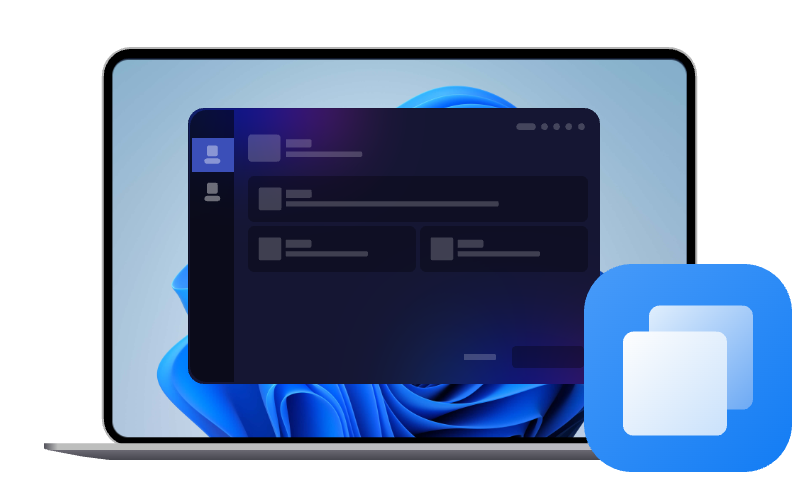How to Clone a Failing Hard Drive to New Drive [All Data]
This is a full guide to clone a failing hard drive, including the operating system, installed programs, all data, etc., to a new one with secure boot. Scroll down to learn more!
Can I clone a failing hard drive?
Short answer: Yes, you can clone a failing hard drive, but handle it with care! Each read puts stress on the drive, which can cause worsen damage. Bad sectors can leave gaps in the dataand the drive may fail during the cloning process.
Here are some scenarios in which cloning works and does not:
|
Scenario |
Success Rate |
How-to |
|
Occasional Bad Sectors |
High |
Use cloning software with error skipping. |
|
Clicking/Scratching Noises |
Low |
Professional data recovery |
|
Frequent Freezes |
Maybe |
Clone in small chunks during stable moments. |
Which drive should you choose?
Before cloning a failing hard drive, it's necessary to pick a right drive. You need to check your current drive, including its disk types (HDDs or SSDs), capacity, interface, and physical dimensions, to be sure it's compatible with your system.
- ✅ Quick Tips:
- Select HDDs if you need high-capacity storage. 500GB is for everyday use, while 1TB or larger is for gamers, power users, and mobile professionals, especially for heavy multitaskers.
- For overall performance, SSDs >HDDs.
- In terms of speed, NVMe > SATA (but be sure if your system supports it).
- Always stick to trusted brands, such as Samsung, Crucial, Western Digital, Kingston, SanDisk, SK Hynix, etc.
|
Aspect |
HDDs |
SATA SSDs |
NVMe SSDs(PCIe M.2) |
|
Ideal Users |
Budget users |
Everyday users |
Power users, gamers, mobile professionals |
|
Form Factor |
3.5" or 2.5" |
2.5" (SATA) |
M.2 2280 (for mostNVMeSSDs) |
|
Storage Range |
500GB–10TB+ |
120GB–4TB |
250GB–4TB+ |
|
Speed (Read/Write) |
~100–150 MB/s |
~500–550 MB/s |
2,000–7,000+ MB/s |
|
Boot Time |
30–60 seconds |
10–20 seconds |
5–10 seconds |
|
File Transfer |
Slow |
Fast |
Ultra-fast |
|
Noise & Vibration |
Audible |
Silent |
Silent |
|
Heat Generation |
Moderate |
Low |
Higher (especially Gen 4 models) |
|
Durability |
Mechanical parts, less durable |
No moving parts, more durable |
No moving parts, highly durable |
|
Compatibility |
Widely compatible |
Very compatible (older + newer systems) |
M.2 slot & PCIe required |
|
Price |
Lower |
Affordable |
More expensive |
How to clone a failing hard drive
AOMEI Cloner is a simple, powerful, reliable cloning software that can clone hard drive or SSD in Windows 7, 8, 10, 11, and servers, even if it's failing. It will enable the intelligent clone feature, which clones only the used sectors of a drive, making it easier to clone a faling hard drive without boot issues. For smaller drive, you can choose to clone OS only instead of entire disk.
❤❤❤ Why Choose AOMEI Cloner?
- 👑Bootable clone - clone HDDs/SSDs and MBR/GPT system disks without boot issues (even if smaller).
- Intelligent clone (default) - only clones the used sectors of a drive and skips the empty sectors and bad sectors.
- Edit partitions - resize partition size on the destination disk, especially those with different disk partition styles(one MBR, one GPT).
- SSD alignment - align SSDs with 4k technology to improve the performance and lifespan.
- Disk compatibility - compatible trusted brands and different interfaces, such as Samsung, WD, SanDisk, Crucial, etc.
Step 1. Open AOMEI Cloner after installing, click Clone > Disk Clone.
Step 2. In the Select Disk window, select the old hard drive you want to clone and click Next.
Step 3. In the Destination Disk window, select the new hard drive (all data will be overwritten) and click Next. Click OK to continue.
Step 4(Important). Be sure to check the SSD Alignment feature to align SSD for better performance(if it is). Try the Edit Partitions feature for smooth cloning in the following two situations.
- The target SSD drive is larger. Select "Add unused space to all partitions or "Manually adjust partition size. The former is recommended as it is adjusted automatically without human intervention and minimizes errors.
- Both drives have different partition styles (one MBR, one GPT). Check the option "Convert the destination disk from MBR to GPT or vice versa to make them identical.
Step 5. Be sure your settings and click Start Clone to clone hard drives or SSD drives. By default, this software will enable the intelligent clone feature to clone only used sectors of a drive and skip the empty sectors and bad sectors, making it easier to clone a failing hard drive.
Free download AOMEI Cloner if you want a worry-free cloning software!
After cloning, you need to swap both drives and test if it's bootable. Don't format the old drive until you are sure. Here take laptops as an example (desktops are similar):
- Power off your laptop completely and remove the back panel to access the disk slot.
- Unscrew the screws securing the original drive or the slave slot. Please put them together for convenience.
- Gently remove the original drive and install the new drive in it, usually at a 30°or 45°angle. (If it's Samsung 990 Pro or other high-end NVMe SSDs, you are advised to add a heatsink before installing it). For the slave slot, please directly install the new SSD.
- Reinstall the back panel and try to boot from the new hard drive or SSD.
Closing Words
You can easily clone a failing hard drive if you choose a reliable cloning software like AOMEI Cloner. It will include all the boot-required partition(s) and skip the bad sectors to be sure the cloned drive is still bootable.
It also helps handle different cloning issues, such as not enough space, wrong disk partition style, cloned hard drive shows wrong size, etc. In addition, it's highly compatible with different disk brands, such as Samsung, Crucial, WD, SanDisk, etc., regardless of the interface.
FAQs
What are the hard drive failing signs?
- Strange noise: A rhythmic clicking, grinding, or buzzing noise from the drive.
- Sluggish performance: Booting up takes ages, and files take forever to open.
- File corruption: Files won't open, or disappear altogether.
- SMART Warnings: System diagnostics warn of imminent failure. Or tools like CrystalDiskInfo flag "Caution" or "Bad Sectors."
- Blue screens & errors: Frequent crashes or displaying errors like "disk not found", "no boot device", etc.
Why does a hard disk fail?
- Bad Sectors: Corrupted areas that can't be read or written to, usually occurring on aging or poor-quality hard drives.
- Overheating: Overheating can destroy internal components.
- Physical Damage: Dropping laptops or external drives is a big no-no. The drive's read/write head might be scrap metal.
- Firmware Bugs: Glitches that even IT pros can't explain.
Is it possible to fix a failed hard drive?
In most cases, a failing hard drive cannot be fully fixed, however, you may be able to recover some data or use it for limited purposes.
- Logical Errors:
The hard drive is not physically damaged, but has logical errors like a corrupted file system, you can attempt to check the disk for errors using CHKDSK (in Windows) or recover data using specialized data recovery software like AOMEI FastRecovery.
- Bad Sectors:
If the hard drive has bad sectors, i.e., areas no longer reliable, you can use chkdskX:/f /r /x command to mark bad sectors and prevent the drive from using them.
- Corrupted Boot Sector:
A corrupted boot sector can sometimes be repaired, although it might be a symptom of a more severe problem. Try chkdsk X: /f /r to fix file system errors, and Startup Repair for common boot issues, including boot sectors.
If still not working, try the bootrec.exe command to repair the master boot record (MBR), boot sector, and boot configuration data (BCD) store.

